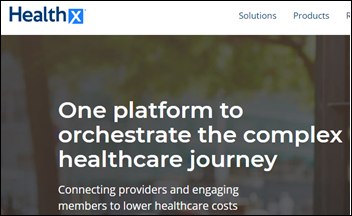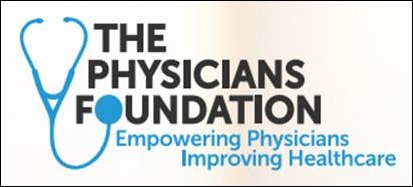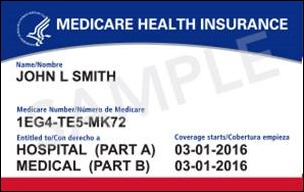Top News

Paper EHR woes following Hurricane Katrina created the push for EHRs and interoperability in 2005 (and propelled Karen DeSalvo into the National Coordinator role in early 2014), so it’s fitting that Georgia’s GRAChIE HIE is working to connect Southeast providers via the EHealth Exchange to meet care needs that are being challenged by Hurricane Florence.
In related news, HIEs in Tennessee and North Carolina take just 48 hours to connect their respective systems to allow Tennessee providers to pull up records for North Carolina evacuees who require medical care there.
Also, UNC Health Care waives fees for its MDLive-powered virtual visits during the hurricane.

HHS reminds hospitals in North Carolina, South Carolina, and Virginia that it is temporarily waiving several HIPAA Privacy Rule sanctions and penalties:
- The requirement to obtain patient consent to speak with family members and friends about their care
- The requirement to honor patient requests to opt out of the facility directory
- The requirement to provide a notice of privacy practices
- The right of the patient to restrict uses and disclosures and to request alternative forms of confidential communications
I would be interested in hearing from IT folks hurricane-affected hospitals about how they prepared for the storm or responded to its effects.
Reader Comments
From Silver Surfer: “Re: KLAS. We’re a vendor and cancelled our agreement three years ago after KLAS assigned 18 months of feedback from our clients to the wrong vendor. Three years later, anyone searching KLAS for our consulting firm gets a message that our results don’t meet minimum KLAS Konfidence levels, meaning that we might be losing business from prospects who see that as a negative for our company even though it was KLAS’s error.” Unverified. The strongest complaints I get regarding KLAS’s methodology involve (a) how many of a vendor’s clients they survey; (b) how they select those they speak to; and (c) whether that small subset of clients is representative. People also express concern that paying KLAS to survey more clients than they might otherwise contact gives deeper-pockets vendors a chance to gain ground.
From Vishnu: “Re: [vendor name omitted]. Protecting its managers and team leads against internal sexual harassment accusations. Hopefully in time they will do what’s right.” I’ll omit the company’s name in the absence of legal evidence, such as a filed lawsuit.

From Dr. Ross: “Re: Epic in Denmark. I was in southern Europe for a conference and this article seems to be all the talk, even though I haven’t seen it mentioned in the US.” Three doctors in Denmark’s Capital Region refer to its newly implemented system (in a Google-translated page) as “the killing platform,” saying that it’s cumbersome, illogical, and doesn’t easily share data with quality and research databases (they expressed their concerns in a Danish language video that doesn’t include an English translation). The doctors say the Region’s claim that 30 systems have been replaced by one is “fake news,” as departments that previously used 6-7 systems are still running 3-4, and warns that reduced productivity may bankrupt the Region. They conclude that the system was built for private hospitals in the US and isn’t suitable for those in Denmark despite the claims of “US salesmen and lawyers,” urging the Danish Parliament to take over the project instead of “cling[ing] to a mistake just because you spent a lot of time making it.”

From Udon: “Re: ERISA. Would love to see an expose on that statute, which renders most state-level legislative and regulatory actions meaningless because it governs employer-funded health plans. If you are denied a scan or behavioral stay, you have to sue the health plan – which will fight it tooth and nail – and the most you can get is the cost of the denied benefit.” ERISA, which sets standards for private health and pension plans, got a recent spotlight when an HCA hospital assured a heart attack patient that his out-of-network stay would be covered by his insurance, then went after him for the $109,000 balance beyond what Aetna paid because his employer-provided insurance was self-funded (as is true of 60 percent of people), meaning he’s not protected by state-mandated prohibition of balance billing. On the other hand, those state protections are not common anyway and are often not comprehensive. ACA prohibits balance billing for out-of-network ED visits, but still allows out-of-network doctors, hospitals, and ambulance services to demand payment from the patient beyond the negotiated amount their insurance pays. So, Mr. Life-Threatening Emergency Patient, your job before breaching a hospital’s financially (and sometimes clinically)dangerous wall is:
- Study your employer’s insurance ahead of time to see if it’s self-funded.
- Keep a list of which hospitals are in your policy’s ever-narrowing provider network.
- Never travel beyond the immediate vicinity of those in-network hospitals.
- Stay conscious at all times during your medical crisis (or better yet, bring a medical bodyguard) so you can ask every person you see whether they’re in your network since hospitals are notorious for letting people work out of their building who are anxious to bill you separately and who don’t need your approval to do so.
- Remember that you don’t have a choice of ED doctor, surgeon, anesthesiologist, hospitalist, etc. and your condition makes elective transfer unlikely, so wear ear plugs to mute the sound of the ever-ringing cash register.
- Assume that despite paying for what looks like decent insurance, an unplanned medical event could progress quickly into an unplanned medical bankruptcy courtesy of healthcare profiteers and their political lap dogs who like things just the way they are.
HIStalk Announcements and Requests

Poll respondents express little interest in paying for expanded consumer genetics testing at a higher price, with the most significant concern being that long-term care insurers could use your personal data against you — the testing companies aren’t covered by HIPAA’s minimal protections and therefore your data can be sold to anyone.

New poll to your right or here: How much impact will Apple Watch’s announced EKG recording capabilities have on overall population health? I admit I’m skeptical about all consumer diagnostic tools for these reasons:
- Our system is already burdened by excessive use and cost, so further clogging up EDs and PCP offices with Apple Watch wearers demanding to have providers interpret their likely meaningless readings isn’t necessarily a good thing
- Many millions of Americans have already been accurately diagnosed with life-affecting conditions they can’t afford to have treated and this further aligns people into have/have not categories
- It reinforces Silicon Valley’s misperception that our poor public health is caused by underdiagnosis or misdiagnosis rather than a screwy system of misaligned incentives and the siphoning off of most of our healthcare spending to episodic care providers rather than toward population and public health
- Such tools also reinforce the inaccurate idea that funneling symptom-free people into a healthcare system that can do more harm than good is in their best interest, especially the largely elderly population likely to experience atrial fibrillation
Thanks to Jenn for covering for me for a few vacation days. I’m happy to have rendered myself at least temporarily redundant so I can take occasional worry-free time off without being chained to a computer all day. You may notice the difference since my writing is grumpier and more wearily skeptical than Jenn, whose forte is admirable journalistic excellence rather than pent-up, post-vacation ranting.

Spam protection has made sending bulk email – such as my HIStalk “we’ve published something new” notices – a crapshoot. People tell me every day they aren’t getting the updates, yet the problem always involves their email server’s settings that I can’t fix. I can only suggest that you enter your email again if you aren’t getting my updates, which is risk-free since you won’t get multiple email copies no matter what.

Welcome to new HIStalk Gold Sponsor LightSpeed Technology Group. The Chapel Hill, NC-based company’s VeriDOCs revenue cycle solutions offer a secret sauce for professional fee coding and billing in emergency, anesthesia, and hospitalist management services in supporting technical disparity and diverse coding volume across many locations. It offers interfacing (EHR integration, demographics, billing); the VeriCODE quality-driven medical coding application; a web-based coder QA pre-billing audit application; a physician peer review tool; and VeriNET workflow oversight and reporting. The end result is that coders and auditors work from a streamlined, secure platform that drives faster onboarding, more efficient coding, and faster bill turnaround. Thanks to LightSpeed Technology Group for supporting HIStalk.
Webinars
September 26 (Wednesday) 12:30 ET. “How to Ensure Patient Records are Always Available.” Sponsor: Goliath Technologies. Presenter: Goliath Technologies engineering staff. This webinar will discuss how an early warning system can help your organization ensure your EHR systems and patient records are always available. You’ll also learn how to proactively anticipate, troubleshoot, prevent, and resolve end user experience issues before users or patients are impacted.
Previous webinars are on our YouTube channel. Contact Lorre for information.
Acquisitions, Funding, Business, and Stock

Outgoing Cerner President Zane Burke has sold $52 million worth of CERN shares in the past couple of weeks. I notice. CERN shares are down 6 percent in the past year versus the Nasdaq’s 24 percent gain.

Netflix co-founder Marc Randolph, speaking at Health Catalyst’s Health Analytics Summit, urges attendees to develop optimism, confidence, and a tolerance for risk in describing how the tiny, struggling, two-year-old Netflix practically begged Blockbuster to buy it for $50 million and was quickly shown the door. He advocates “testing it without doing it,” explaining that Netflix “was not about having good ideas. It was about a system and a culture of trying lots of bad ones. What we realized is that the key to this is not the good idea. It was how quickly and easily and cheaply you could try as many ideas as you could think of.”
Sales
- Wyckoff Heights Medical Center (NY) chooses Allscripts Sunrise Abstracting.
- Chicago area home care provider Bowes In Home Care joins PreparedHealth’s EnTouch network that connects hospitals with post-acute providers to improve outcomes.
Decisions
- Stevens Community Medical Center (MN) will replace Cerner and EClinicalWorks with Epic in November 2018.
- Summit Healthcare Regional Medical Center (AZ) will go live with Allscripts Sunrise in 2019, replacing Allscripts Paragon.
- IU Health Jay Hospital (IN) replaced Meditech with Cerner on March 1, 2018.
These provider-reported updates are supplied by Definitive Healthcare, which offers a free trial of its powerful intelligence on hospitals, physicians, and healthcare providers.
People

Industry long-timer Jonathan Niloff, MD, MBA died Saturday of cancer at 64. He was chief medical officer of Diameter Health, a board member of HIMSS North America, and founder of MedVentive (acquired by McKesson in 2012) as well as a former cancer surgeon and ovarian cancer researcher.
Announcements and Implementations

A new Reaction Data survey of 300 providers finds that 62 percent are using speech recognition in their EHRs, with another 15 percent working on it and a stubborn 23 percent saying they’ll never use EHR speech recognition. Not surprisingly, Nuance is the big dog and is gaining ground, while MModal’s much smaller market presence still makes them Nuance’s only real competitor and its user satisfaction is higher. Epic is by far the most commonly used speech-integrated EHR. Only 3 percent of speech recognition users say they might switch vendors.

A new KLAS report on clinical documentation improvement says that Nuance and ChartWise provide the strongest financial ROI, Iodine’s high-satisfaction tools are disruptive in prioritization functionality, and 3M’s offerings are overhyped. Claro Healthcare leads a small pack of services firms that offer CDI optimization and outsourcing.
Other
AMA’s newswire highlights a JAMIA-published comparison of order entry clicks between Cerner and Epic under the title of “62 clicks to order Tylenol? What happens when EHR tweaks go bad.”

An investor in online pharmacy Pillpack — whose value went from zero to more than $1 billion in five years when it was recently acquired by Amazon from its early 30s founders above — lists the company’s lessons learned:
- Relentlessly focus on the end user
- Build a full technology stack that allows the company to control its own destiny (Pillpack spent $10 million building its systems)
- Stand your ground against larger competitors
- Realize that you can’t grow and optimize a business simultaneously – design for scale, don’t code before understanding processes, and don’t industrialize without understanding the problem you’re trying to solve
- Hire executives and board members who have a founder mentality
- Invest in culture, which will be harder to manage as the company grows
- Don’t aim for a people-free business – human touch is essential
- Hire strong operations leaders who have a bias for action
- Hire a strong CFO/COO
In India, the state of Uttarakhand orders the government to provide printers so that every doctor’s prescription can be printed out before signing, addressing a problem in which patients and pharmacists often can’t read the doctor’s writing.

NYU Langone Health’s magazine notes that for the first time, all eight of its surgery chief residents are female.

A jury awards $4.6 million to a cruise ship passenger whose flu symptoms were mismanaged by the ship’s doctor, claiming:
- The Colombia-trained physician (which the lawsuit misstates as “Columbia-trained”) was inexperienced and gave a 25 mg dose of promethazine IV instead of safer, better drugs
- The doctor missed the patient’s cubital vein and instead injected the drug quickly into his ulnar artery
- Staff ignored the patient’s report of a burning sensation, declining to evacuate him by helicopter and instead waiting until the ship’s next port
- The patient developed compartment syndrome, requiring his arm to be amputated at the elbow

Weird News Andy says that despite early examples of scientific hype that turned out to be wrong (“nuclear power will be so cheap it won’t be worth metering usage”) he still likes that we’re getting closer to a Tricorder-like device. University of British Columbia engineers develop a Band-Aid sized ultrasound transducer that could turn a smartphone into an ultrasound machine for $100.
Odd: a Pennsylvania court upholds the prison sentence given to a man who in 2015 dialed 911 while choking. First responders found the 47-year-old passed out on his living room floor, clad only in underwear and socks in front of his computer monitor that was displaying a child pornography chat room. He unsuccessfully claimed that unnamed enemies framed him, with his daughter providing a heartwarming family moment in testifying that her dad isn’t smart enough to know how to download porn.

Internal medicine resident Mike Natter, MD notes that the relationship between the number of things carried and level of medical training is inverse.
Sponsor Updates
- Voalte announces that its VUE user conference, to be held October 3-5 in Sarasota, FL, has sold out for the first time in its history.
- LogicStream Health publishes a new report, “The New Healthcare Imperative.”
- MedData will exhibit at the Ohio American Academy of Pediatrics 2018 Annual Meeting September 21-22 in Dublin.
- Waystar will exhibit at Ohio MGMA September 21 in Dublin.
- The American Heart Association/American Stroke Association names Nordic a “Get with the Guidelines”-compatible vendor.
- Clinical Computer Systems, developer of the Obix Perinatal Data System, will exhibit at the annual Georgia Perinatal Conference September 19-21 in St. Simon’s Island, GA.
- Experian Health and PatientKeeper will exhibit at AHIMA September 22-27 in Miami.
- PerfectServe will co-host the Hospital for Special Surgery Educational and Networking Open House September 21 in New York City.
- Redox will present at Health 2.0 September 16-19 in Grapevine, TX.
- T-System offers disaster relief T Sheets free of charge to hospitals in the path of Hurricane Florence.
- Mazars USA welcomes Chief Human Resource Officer Julie Venkat.
Blog Posts
Contacts
Mr. H, Lorre, Jenn, Dr. Jayne.
Get HIStalk updates. Send news or rumors.
Contact us.






























































































Merry Christmas and a Happy New Year to the HIStalk crowd. I wish you the joys of the season!